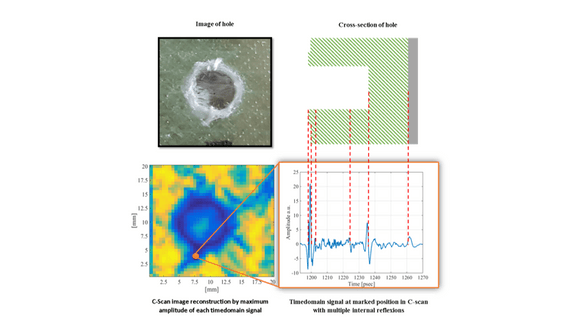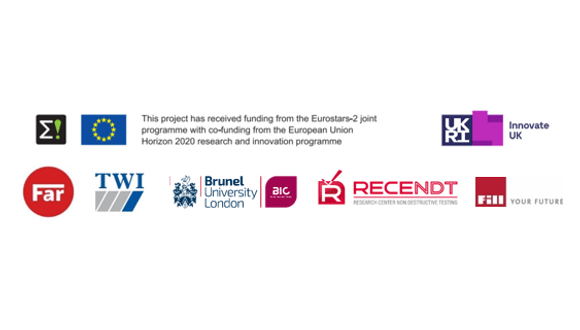Fri, 07 August, 2020
The use of composite materials has increased substantially over the last few decades, led by a demand to reduce weight from the aerospace industry. While composite manufacturing can reduce the need for joining parts, some joints are still needed and mechanical fastening is the most widely used method to do so. Mechanical fastening relies on drilling holes in the parent material, which has the potential to create defects. Drilling of fibre-reinforced composites is a complex process differs significantly from the machining of conventional metals due to their anisotropic, inhomogeneous and highly abrasive characteristics. The abrasive nature of composite materials can quickly degrade tools, resulting in lower quality drilling. Detection and monitoring of tool wear as well as the use of non-destructive testing (NDT) to ensure the integrity of joints is clearly an important topic in composite manufacturing.
Addressing this inspection challenge is the aim of the ATTIC (Automated TeraherTz Imaging of Composites and tooling profiling) project. The kick-off meeting for the 24-month collaborative project, funded through the EUREKA framework, took place on the 7th of May. The consortium consists of five companies from the UK and Austria, including TWI, Far-UK, Brunel University London, the Research Center for Non-Destructive Testing (RECENDT) and FILL. The project is being coordinated by Far-UK. The consortium brings together expertise in composite manufacture, state-of-the-art terahertz testing, artificial intelligence for condition monitoring and automated robotic testing.
The ATTIC project will develop a fully automated drilling, monitoring and inspection solution for glass fibre composites. High-resolution laser profilers will be used to monitor composite drilling tools to ensure that the level of wear is acceptable prior to each operation. This will be combined with machine learning techniques to optimise tool-processing parameters such as drilling speeds. The monitoring will be included as an automated part of the process, reducing the need for operator interpretation.
Once holes have been drilled, inspection of the parent material around the hole will be conducted using terahertz imaging. Terahertz imaging is a promising new NDT technique that has only recently become commercially viable due to advances in photonic sensing technology. Using electromagnetic radiation with a wavelength in the range of hundreds of microns, terahertz are inherently safe and have been employed in airport scanners. Reliably and accurately inspecting thick glass fibre composites using a non-contact method is a step change in the NDT sector and a key part of the ATTIC project.
Initial trials using terahertz imaging on 2mm thick glass fibre reinforced polymer samples have shown promising results. The project will investigate the efficiency of this technique to detect delaminations, a defect often found when drilling composite parts.
 Figure 1. Terahertz imaging of a drilled hole with a resulting defect
Figure 1. Terahertz imaging of a drilled hole with a resulting defect
To deploy the developed solutions, TWI will integrate the two sensors onto a robotic platform and integrate the robotic feedback with sensor data to create a first of a kind robotic terahertz inspection system. Furthermore, different methods of testing GFRP using terahertz technology will also be trialled. The final stage of the ATTIC project will be a real-life demonstrator at FILL’s facilities in Austria.
The project has received funding from the Eureka Eurostars 2 call “Collaborative R&D: Photonics for Advanced Manufacturing” under grant agreement number 106162.
Eureka is an international network established in 1985 as an agreement between 18 countries to foster European competitiveness and integration and to encourage R&D cooperation.
